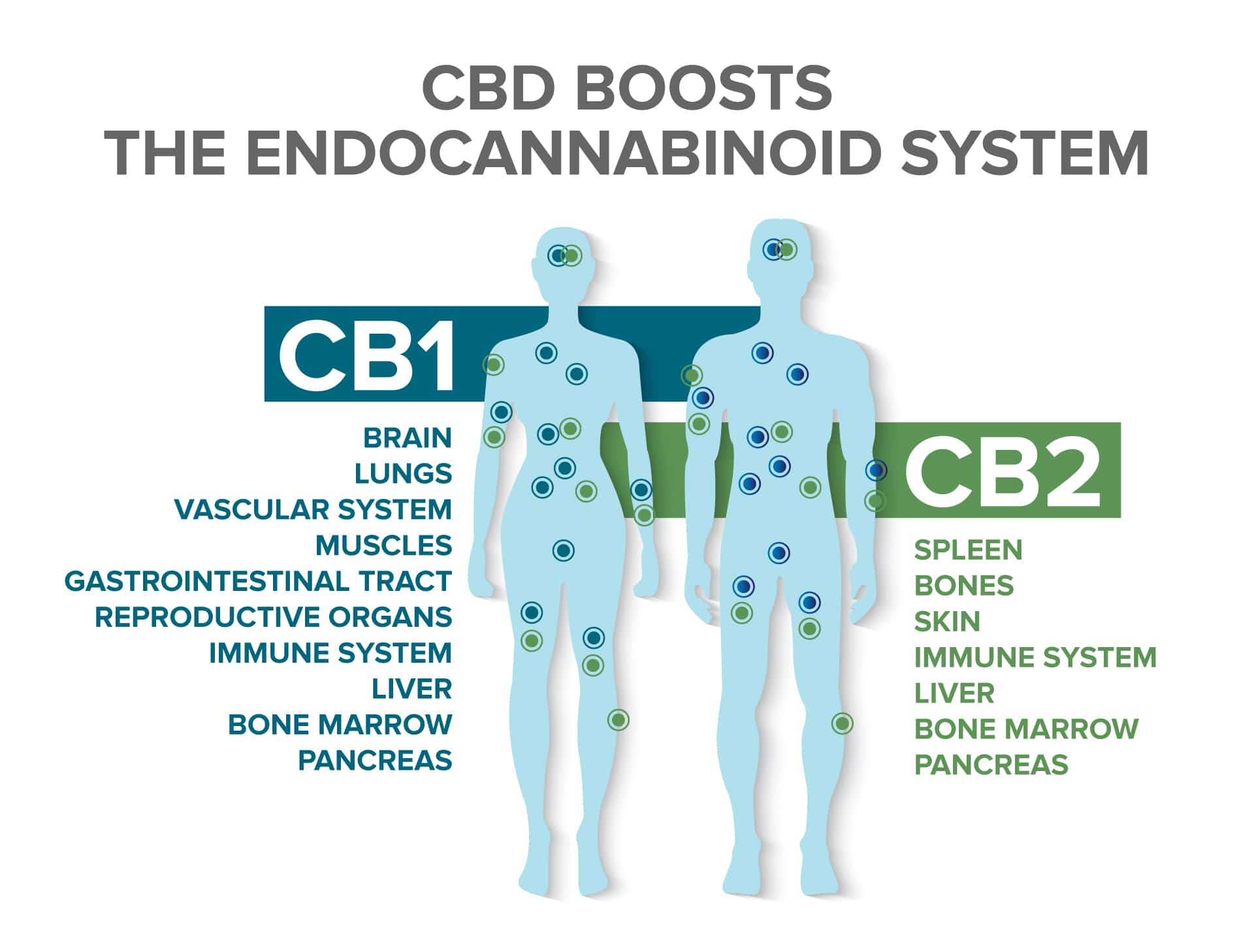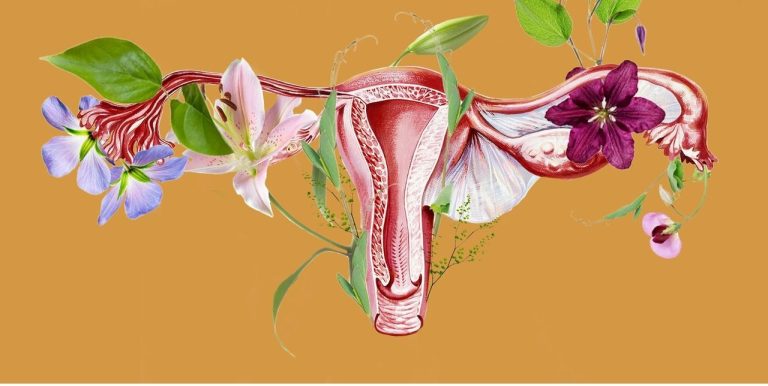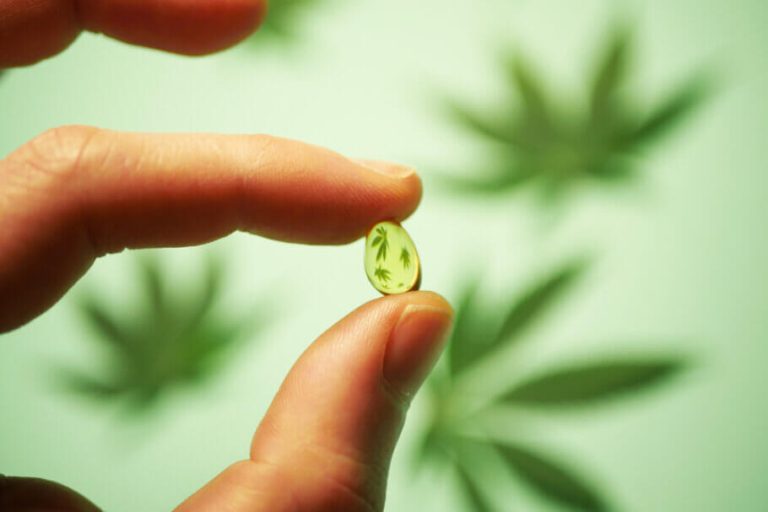Menstrual cramps and endometriosis pain are two afflictions that have plagued women since time immemorial. Women have tried everything in nature’s cupboard to rid themselves of pain that can be excruciating and debilitating. Fortunately, it appears some relief for period pain and endometriosis may be possible with CBD.
CBD has been extolled as a treatment for anxiety, epilepsy, cancer, and pain, in particular MS pain, pain caused by arthritis and spinal cord injuries, muscle pain and chronic pain. CBD has been proven to be effective for chronic pain, but can it help for period pain and endometriosis?
Related reading: CBD Oil for Pain
Although no scientific research has yet been done on CBD for period pain and endometriosis specifically, there is growing body of evidence from animal and human studies that CBD can help manage pain and is also a powerful anti-inflammatory. Most of the evidence of CBD efficacy is anecdotal—from people trying CBD for various ailments and reporting positive experiences, including women using it for period pain relief.
What is CBD?
CBD, short for cannabidiol, is a type of cannabinoid—a chemical produced by hemp and cannabis plants. So far, scientists have identified 113 cannabinoids produced cannabis plants, and there could yet be more. The two best-known cannabinoids are CBD and THC. THC, for the un-initiated, is the psychoactive compound in marijuana (cannabis) that gets you high.
CBD, on the other hand, does not produce any psychoactive or intoxicating effects. CBD oil products generally contain either no THC, or less than 0.3% THC per volume in “full spectrum” CBD products.
 How CBD works in the body
How CBD works in the body
The human endocannabinoid system (ECS) was discovered only quite recently by scientists researching how THC produces the “high” people enjoy so much. The ECS is a highly complex system that is distributed throughout the brain and body. To this day, the scientific community only understands a fraction of what the ECS does and how it works. One of the main functions of the ECS is to promote homeostasis—a state of balance in which the bodies systems are all functioning optimally.
Related reading: CBD and the EndoCannabinoid System
The ECS regulates a large number of bodily systems and functions, including appetite and digestion, mood and sleep; immune system responses and liver function, learning and memory, reproductive functions and more.
Amazingly, our own bodies create cannabinoids, called endocannabinoids (meaning endogenously produced cannabinoids), which act in a way roughly analogous to messengers. CBD is a cannabinoid too, so it can interact with many of the same ECS receptors that our body’s own endocannabinoids do—triggering a broad number of salubrious effects.
The ECS has two main endocannabinoid receptors, which are present throughout the body. CB1 receptors are mainly present in the central nervous system, and CB2 receptors are mostly present in the immune cells in the peripheral nervous system. Endocannabinoids like CBD, THC and others can bind to these receptors with varied effects.
For example, an endocannabinoid that binds to CB1 receptors in the brain might bring stress relief.
Does CBD help for period pain?
For severe menstrual pain, most women take a trusty Ibuprofen or other non-steroidal anti-inflammatory drugs (NSAIDs), which are not the healthiest choice, something we all know, but at times simply can’t avoid.
Although CBD won’t provide complete relief from pain, it can at least lessen one’s dependence on painkillers, reducing the amount necessary to get relief from pain.
CBD can assist with period pain through its anti-inflammatory and pain-relieving properties, and its ability to relax muscles and blood vessels. Seeing that menstruation is a process that involves considerable inflammation, it comes as no surprise that the anti-inflammatory properties of CBD can assist in bringing pain relief.
Smooth muscles line the uterus and these contract during menstruation, causing pain. Cannabinoids have a relaxing effect on these muscles and the smooth muscles that line blood vessels, contributing to pain relief. What’s more, CBD is thought to improve “extinction learning”, the process whereby your body ignores alarming signals over time, for example a loud repetitive noise that startles you the first time becomes a background noise, or a stinging pain becomes a dull background pain. Finally, CBD is also thought to affect the perception of pain, reducing your mind’s awareness of it overall.
What about endometriosis pain?
This painful disorder happens when the tissue that normally lines the inside of the uterus (the endometrium) grows outside the uterus, finding purchase on the ovaries, fallopian tubes or the lining of the stomach.
Research has found a cannabinoid agent can alleviate pain as a result of endometriosis, and there is a growing body of work that supports the idea that the endocannabinoid system should be targeted when developing therapies for pain relief.
While many women report positive experiences about the relief they’ve experienced with CBD, cannabis medicine expert, Dr. Dani Gordon told the Period Story podcast that nothing, including CBD, is a quick fix or cure-all. Some people do find that it helps with acute period pain, but it’s not the norm, she said.
How should CBD be taken?
CBD products are effective and safe if taken correctly. The quality of the product is key to its efficacy. The extent of the relief you’ll experience, depends on several factors, but the quality of the product plays a major role.
As for dosage, it’s best to consult your doctor. Dosages depend on various factors such as the potency of a product, your body weight and the reason for taking CBD. The common practice is to start with a low dosage and slowly increase it over time till you reach the point where the CBD works for your complaint. Experts say the dosage varies from individual to individual.
Related reading: CBD Oil Dosage
There are several ways to take CBD
The most recommended method for period pain relief is taking drops of CBD tincture sublingually. Although you can drop some CBD oil in your coffee or other drinks, the surest way to get the most CBD into your bloodstream is to drop CBD directly under your tongue, where there are a lot of large blood vessels.
CBD can also be effective in a topical salve. In the case of period or endometriosis pain, massaging the lower abdomen with a CBD cream or lotion can bring pain relief after a while. Although the skin is the organ with the most ECS receptors, it is a bit difficult for CBD to penetrate the skin. Therefore, a more potent CBD cream is better.
Using a vape pen to get quick relief from pain has also become very popular. Proponents of this method suggest that inhaling CBD can help you to feel better much more quickly compared to taking it sublingually. However, this method comes with risks associated with vaping, including vaping liquid that contains harmful substances. If thinking about using a CBD vape, make sure that the product you are buying is safe.
Another method that is starting to gain popularity is the CBD suppository method. The benefit is that this method places CBD directly in the problem area. While there are loads of anecdotal evidence online that this is the quickest  way to get pain relief, doctors advise against it as anything you introduce into this delicate area may upset its microbiome in ways that we don’t understand yet. So, it’s best to leave that little experiment until more information is available about its safety.
way to get pain relief, doctors advise against it as anything you introduce into this delicate area may upset its microbiome in ways that we don’t understand yet. So, it’s best to leave that little experiment until more information is available about its safety.
Is CBD safe to try for period pain and endometriosis?
Except for the questions around the suppository method, CBD oil is absolutely safe as it is both non-addictive and non-toxic as well as well-tolerated in large doses in humans. Unfortunately, not much research has been done into CBD for period pain and endometriosis, and that’s something that should change soon. Women deserve better options to deal with these kinds of pain. We need to implore scientists and decision makers to increase their research into this application for CBD and find ways to make CBD products more affordable.
Related reading: CBD for Women’s Health
Medical disclaimer: This information does not constitute medical advice and it should not be relied upon as such. Consult with your doctor before modifying your regular medical regime.
Benefits of CBD oil

CBD and Cancer Treatment: Myths and Facts
Cancer is a formidable opponent, and traditional treatments like chemotherapy and radiation often bring severe side effects. In the search for relief, many
read more
CBD Oil Side Effects – Risks You Should Be Aware Of
Though considered generally safe, everyone new to CBD oil in Canada should always exercise basic precautions and try to find out as much
read more
Try This Festive Vegan CBD Eggnog Recipe!
Looking to spice up your self-care routine over the holidays? Here’s an idea! CBD Eggnog! Put your feet up by the fireplace and
read more
CBD vs. THC, What are the Differences, Benefits and Effects?
Since the legalization of cannabis in 2018, the question of CBD vs THC has become a hot topic. Though the science is young
read more
CBD for Period Pain and Endometriosis
Menstrual cramps and endometriosis pain are two afflictions that have plagued women since time immemorial. Women have tried everything in nature’s cupboard to
read more
Microdosing CBD: Why Less is More
Many assume that more CBD means better results, but that’s not always true. Instead, taking smaller doses more frequently may be a smarter
read more
